
 |
|
#16
|
|||
|
|||
|
....as does this 2011 F212XLCE
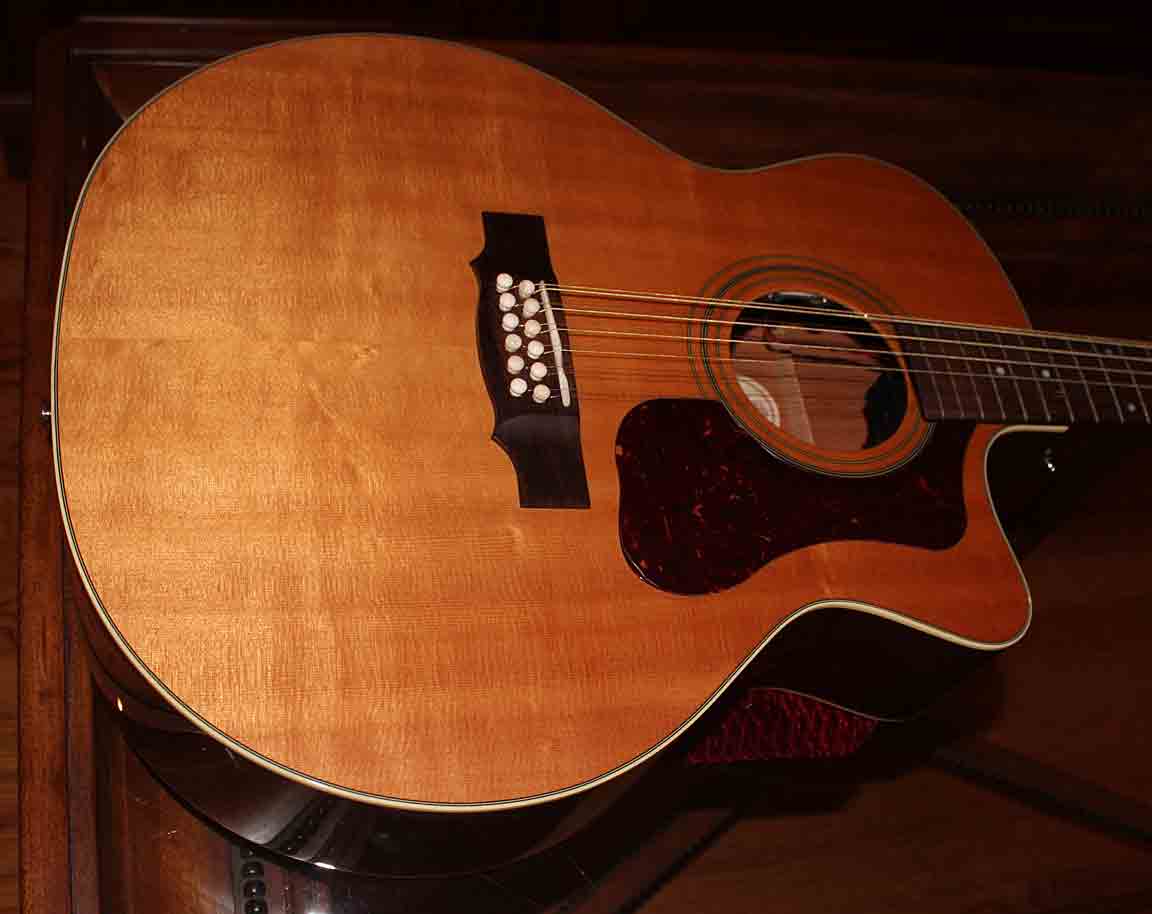 [/QUOTE] [/QUOTE]
__________________
2018 Guild F-512 Sunburst -- 2007 Guild F412 Ice Tea burst 2002 Guild JF30-12 Whiskeyburst -- 2011 Guild F-50R Sunburst 2011 Guild GAD D125-12 NT -- 1972 Epiphone FT-160 12-string 2012 Epiphone Dot CH -- 2010 Epiphone Les Paul Standard trans amber 2013 Yamaha Motif XS7 Cougar's Soundcloud page |
|
#17
|
|||
|
|||
|
No. It is ripples 90 degrees to the grain lines, or another way ripples across the grain lines. Very noticeable at 7:00 o' clock in the preceding guitar.
__________________
Fred |
|
#18
|
|||
|
|||
|
My 1960's Harmony Sovereign has some nice silking. I do think as a top darkens it becomes less prominent.20180511_224110.jpg
|
|
#19
|
|||
|
|||
|
Here's another example from a modern guitar. My Goodall:
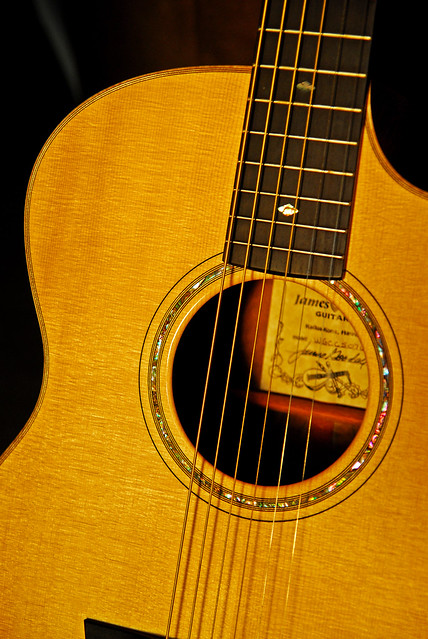
__________________
Guild CO-2 Guild JF30-12 Guild D55 Goodall Grand Concert Cutaway Walnut/Italian Spruce Santa Cruz Brazilian VJ Taylor 8 String Baritone Blueberry - Grand Concert Magnum Opus J450 Eastman AJ815 Parker PA-24 Babicz Jumbo Identity Walden G730 Silvercreek T170 Charvell 150 SC Takimine G406s |
|
#20
|
|||
|
|||
|
As Martingitdave pointed out, the "silk" or "ray fleck" that one sees is the medullary rays. The medullary rays run radially in the tree and when wood is quartersawn, the medullary rays are cut along their length exposing their cut edges. Think of a bundle of drinking straws. Cut the bundle of straws along its length, exposing cut edges of the straws.
In species where the rays are visually obvious, you will only see them when the wood is perfectly quartersawn. (Often, a board will have the grain vary across the width of the board so that the "silk" diminishes as one traverses the width of the board.) Being a part of the mechanical structure of the wood, they do not fade in appearance over time. The size of the medullary rays varies from one species of wood to the next. In some species, such as white oak, the medullary rays are huge. In other species, such as maple, the medullary rays are small, but still obvious. In other species, the medullary rays are very small and not obvious to the naked eye. White oak: 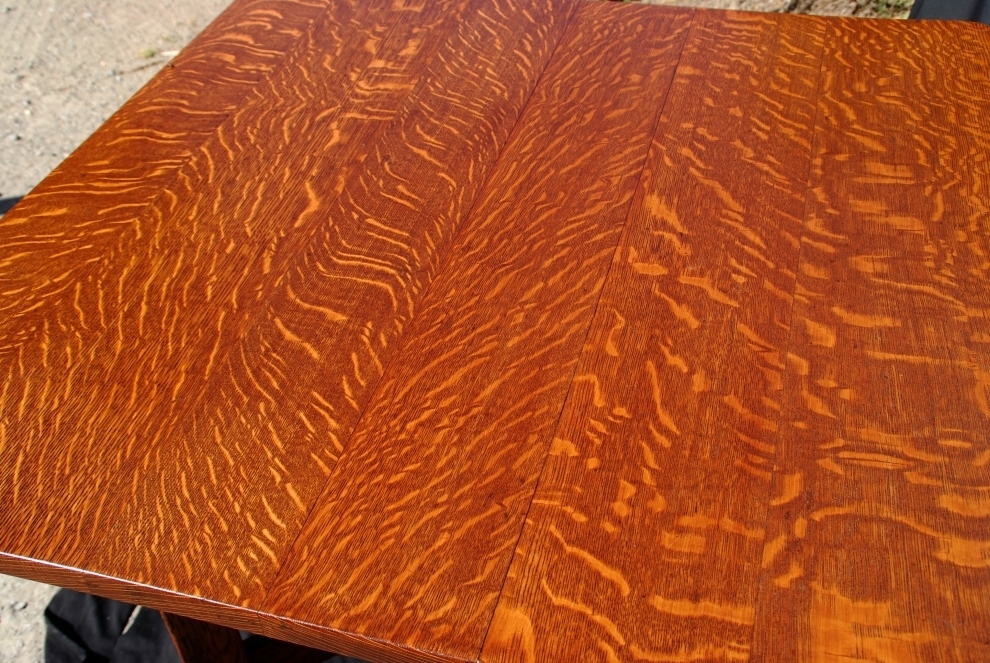 Quartered maple: note that the "silk" or "ray fleck" is not "figure", as in "figured maple". 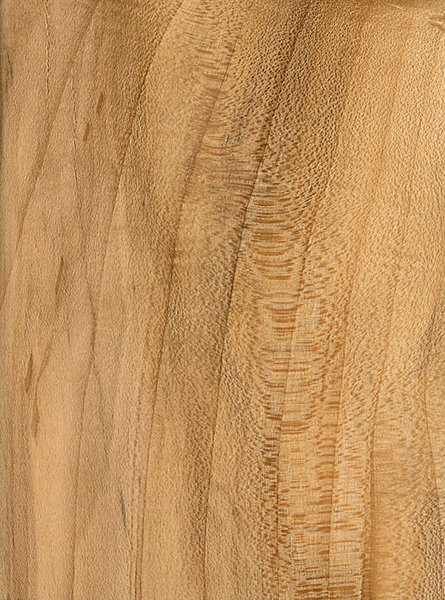 Western red cedar: 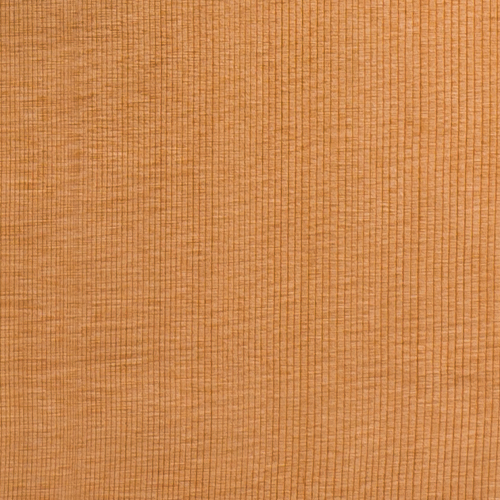 Honduras Mahogany: 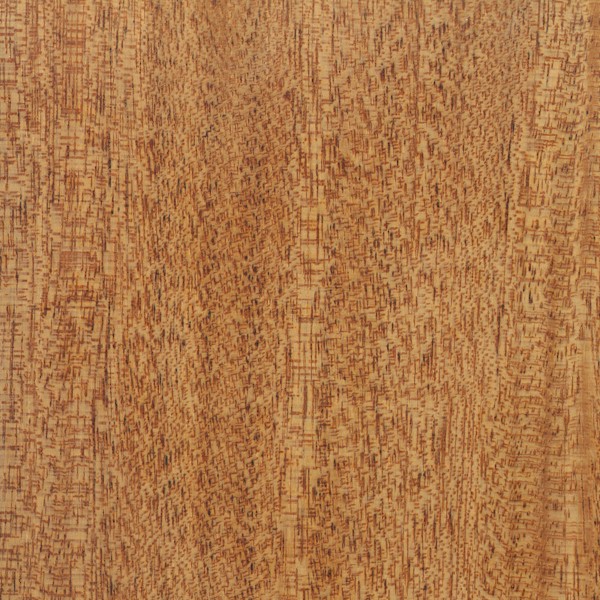 Lacewood: 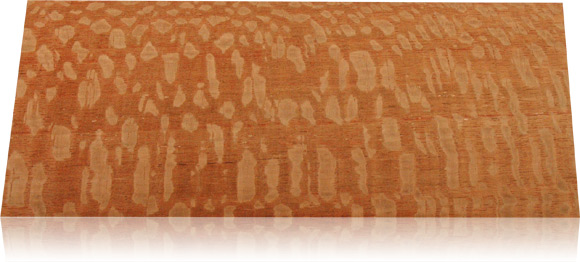
Last edited by charles Tauber; 05-12-2018 at 09:36 AM. |
|
#21
|
|||
|
|||
|
Thank you, Charles, for your informative contribution!
|
|
#22
|
|||
|
|||
|
Grading Top-Wood for Musical Instruments
There is no substitution for experience. Once you have handled many peices of tonewood and experienced how they evolve into instruments, you begin to develop a ‘feel’ for how they will ‘sound’. We know of no scientific methods that have a predictable outcome. Measurements will (at least) help the selection of pieces that meet the physical and structural requirements for a musical instrument. The following focuses on the top – the single largest contributer to the final sound. Visual Inspection The most commonly seen grading scale for tonewoods is A, AA, AAA, and AAAA (or master grade). The scale is subjective but useful for the retail of tonewoods. Ironically, when a set of top pieces are uniform, tight grained and beautiful, these are also the atributes of a good sounding top. Like everything else in life, there are many exceptions… Grade A No knots, swirls or holes and fairly straight grained. There may have uneven color, streaks and uneven grain lines (also called compression). It will probably not be perfectly quartersawn or the piece will be well quartered only for part of its width. Runout is likely. There will be little or no medulary rays – cross-grain figure. Grade AA is somewhere between A and AAA grade – see below. Grade AAA has an even overall color with uniform and tight grain lines, evenly quartersawn along the full width of the board and with little or no runout. Grain lines should be tighter than 12 lines per inch. There may be good cross-grain figure, also known as silking or bearclaw. Grade AAAA (Mastergrade) has uniform color and pronounced cross-grain figuring in addition to being evenly quartersawn with no visible runout and very uniform grain. Grade AAAAA – Used by some builders to indicate that their wood is better than anyone elses. https://acousticmusic.org/research/g...ion/tone-wood/ If Grade AAAAA is experienced as stated, what of the previous 4? |
|
#23
|
|||
|
|||
|
Quote:
Sounds nice too . . .
__________________
NOT from Queen - he's much cleverer  I am English, so are all my spellings Two guitars I'm happy with . . . 
|
|
#24
|
|||
|
|||
|
As many have mentioned hear, I was told 25 to 30 years ago ( and newer view can very well hold true, if there are any) but then I asked what it was and was told that it occurs when some woods have been sawn perfectly. So i may have carried an incorrect rumor for many years and to add I was informed by another luthier that it never goes away. imo
__________________
Also known as Ratherbwalkn Martin OOO-28 Martin J-40 Martin D-28 Martin D-16h on loan |
|
#25
|
|||
|
|||
|
I no longer have the Alvarez acoustic ( can't remember the model # )that had what I think you are all referring to. Not knowing what to call it, I always said it had a nice "shimmer" and this top had it in spades. I traded it for my first Martin, a DRS2, which has no silking/shimmer/whatever but what it lacks in that department it MORE than makes up for in tone and volume.
Best, PJ |
|
#26
|
|||
|
|||
|
Quote:
__________________
Fred |
|
#27
|
|||
|
|||
|
Quote:
This piece of wood displays both "silk" and "bear claw":  30 years ago, "bear claw" was seen as a defect and wood with it was downgraded and avoided. Today, some pay a premium to buy wood that has it. Fashions. Last edited by charles Tauber; 05-12-2018 at 09:42 AM. |
|
#28
|
|||
|
|||
|
Thank you for all the information on this thread.
Was pleasantly surprised to notice the silking on the 2018 M-36 (Reimagined Spec) which arrived on Thursday, particularly unexpected for a non-custom shop guitar. Could be the <controversial but I happen to like it> vintage toner brings it out more, but I don't have anything close to this effect in my other Sitka tops - though I suppose I'll start looking at them from different angles to see whether it's there just less noticeable without the toner to bring it out. IMG_3525.jpg IMG_3526.jpg IMG_3523.jpg
__________________
Bashkin 00-12 Adi/Hog Bashkin 0M-MS Swiss Moon/PRW(build thread) Bashkin GC-12 Sitka/Koa Carter-Poulsen J-Model German Select Spruce/MacEb Fender MIJ Strat ('90) and 50s RW Tele ('19) Martin 00-28c Spruce/BRW('67) Martin M-36 (R) Sitka/EIR Michaud O-R Cedar/Koa - New Build Michaud J-R Sitka/MBW K. Yairi RF-120 Spruce/EIR KoAloha KTM-25 Koa/Koa Yamaha G-231 Cedar/Hog ('71) |
|
#29
|
|||
|
|||
|
As one of my luthier friends said when the subject came around one time "Silking is an indica of a good quartersawn top, but not a requirement."
My '64 00-21 has lovely silking. My '57 00-18, not so much. Buy with your ears. |
|
#30
|
|||
|
|||
|
Quote:
I have regretted that decision ever since. TW |